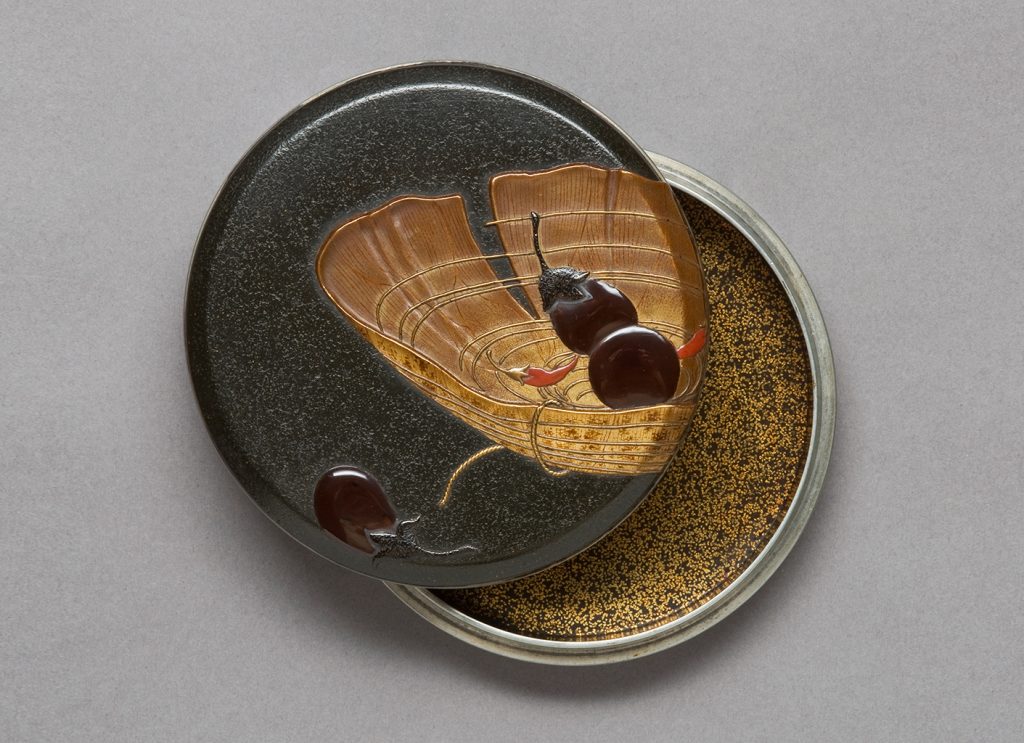
Culture/Country: Japan
Period: late 19th century
Medium: Colored lacquers and gold on wood, silver rims
Dimensions: 15/16 x 3 3/8 in.
Collection title: Jacqueline Avant Collection
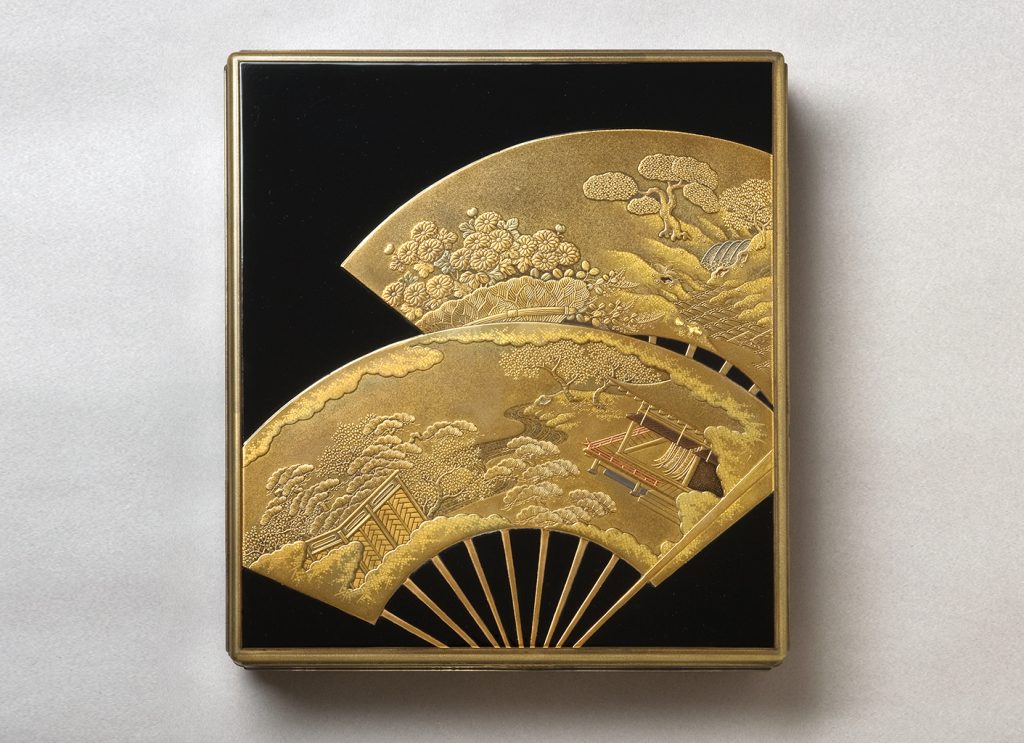
Culture/Country: Japan
Period: circa 1920s
Medium: Box: lacquer, gold and silver on wood; water dropper: brass, pewter, silver
Dimensions: 1 13/16 x 8 x 7 1/8 in.
Collection title: Jacqueline Avant Collection
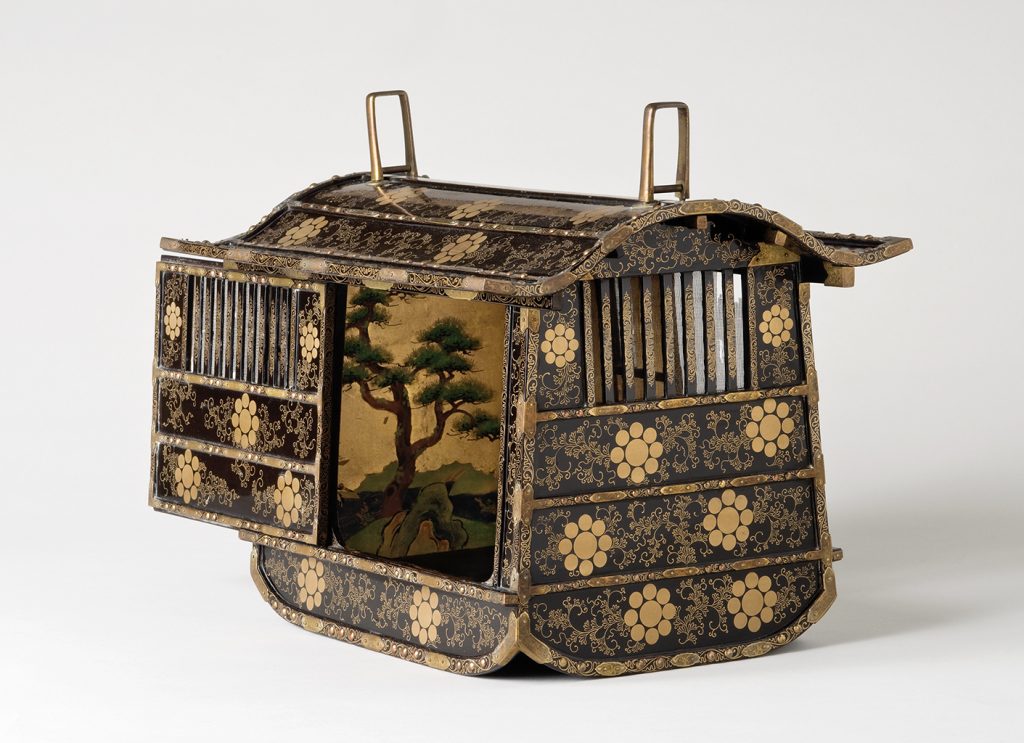
Culture/Country: Japan
Period: 17th century
Medium: Lacquer and gold on wood, brass fittings, mineral pigments on paper, missing crossbar
Dimensions: 7 7/8 x 12 ¾ x 9 7/8 in.
Collection title: Jacqueline Avant Collection

Culture/Country: Japan
Period: circa 1800
Medium: Lacquer, gold, silver, carved purple glass, black lacquered metal, gold metal on wood, suzu (tin alloy) rims; water dropper: engraved silver
Dimensions: 3 ½ x 7 7/8 x 6 5/16 in.
Collection title: Jacqueline Avant Collection

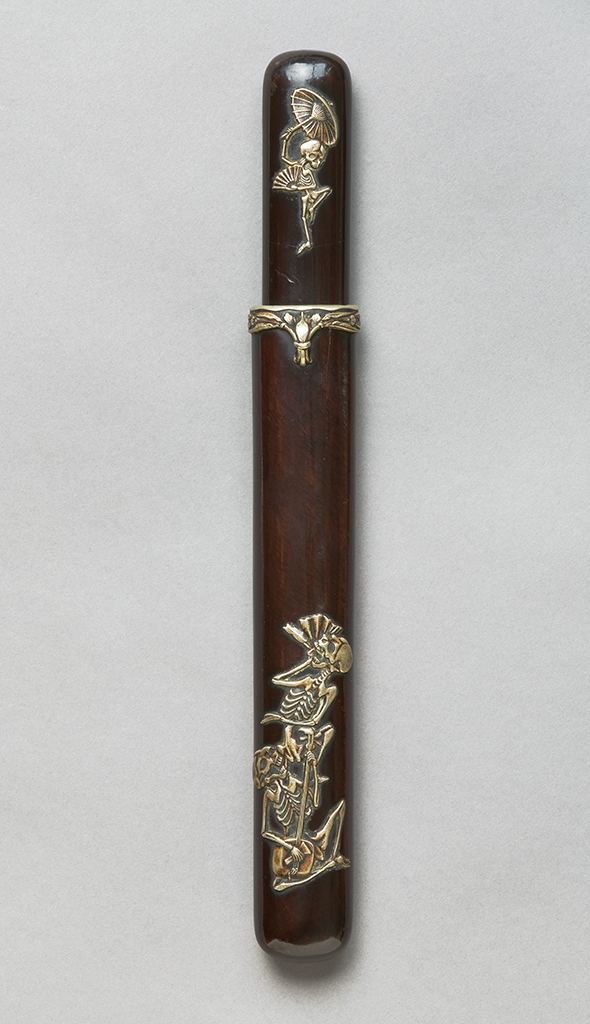
Japan, late 19th – first quarter 20th century
Lacquer with brown-lacquered silver inlay on wood
9 ¼ x 1 x ¾ in., Jacqueline Avant Collection
The picture first appears as a spark flying from a dark surface. The glints begin to form intricate designs in colors of light: pink chrysanthemums, silver wrinkly skin, a golden kimono, a vivid touch of red on the lips of an elderly figure. Further away, in the upper right corner, appear misty summits of bronze, gold, and silver. A narrative begins to form from the darkness on a lid of an ink box.
This is one of among forty works from the elegant collection of Japanese lacquer assembled over more than a decade by Jaqueline Avant, a noted California collector of Japanese art. Selected by Hollis Goodall, Curator of Japanese Art at the Los Angeles County Museum of Art, the exhibition will be presented at the Crow Collection of Asian Art from March 2 to September 15, 2013.
Acquired by Mrs. Avant since the mid-1990s, this group of Japanese lacquers reveals the collector’s love for this art form so treasured through history by Japan’s elite. Many works on display originated from the dowries of feudal lord families, with family crests recording marriages of power and influence. Others were collected to delight wealthy merchants and reflect their personal tastes in dress and activities, from tea to smoking or composing poetry.
Recent finds suggest that lacquer has been employed in Japan as a protective film for at least 11,000 years. The lacquer is painstakingly harvested from twenty-year-old cultivated urushi trees; each tree is bled for its sap, producing less than a cup of liquid and giving up its life in the process of harvest. The lacquer is then filtered and applied in about thirty thin layers to a paulownia wood or lacquered hemp core. After each layer is polymerized in a humidor and then sanded, the upper layers are sprinkled with gold or silver powders and flecks to create designs. The final coat of clear lacquer is then ground down to reveal the metallic design. The care and skill required for application of both ground lacquer layers and design, and the rarity and expense of materials, meant that lacquer work was the most revered of family treasures in Japan, just as silver would have been in Europe or the Americas.
Recent finds suggest that lacquer has been employed in Japan as a protective film for at least 11,000 years.
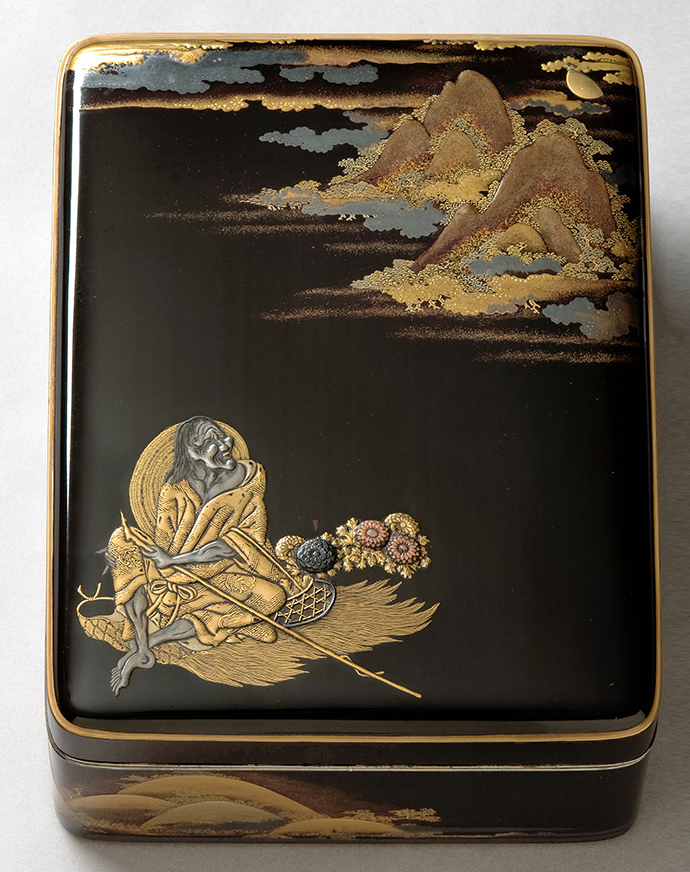
In her collecting, Mrs. Avant has often been drawn to lacquer works used by women and men for arts and entertainment, such as poetry writing, poetry matching games, enjoyment of food or smoking, ceremonial display, wear (mulberry leaf inro), or personal care, such as boxes for combs, mirrors, tooth blackening powder, or incense. Also on view are boxes to hold objects of religious devotion, such as Buddhist holy texts (sutras), and even weapons for self-defense, including a decorated baton or knife.
The curator opens the story of the woman on the ink box. She is Ono no Komachi, one of the Six Poetic Immortals identified by Ki no Tsurayuki in the 10th century. Ono no Komachi was a stunning beauty in her youth, who, after having rejected one more suitor, is condemned to live her life alone. The contrast of old Ono no Komachi silhouetted against the depth of the black lacquer reflects a state of loneliness and nostalgia. The natural elements of chrysanthemums and mountains remind us of the transient nature of all things (mono no aware). One poem by Ono no Komachi provides the theme of this box:
This abandoned house
Shining in the mountain village
How many nights
Has autumn spent there?
Seeing the moonlight
Spilling down through the trees,
My heart fills to the brim with autumn.
—Ono no Komachi poem
(translation by Jane Hirshfield and Mariko Aratami)


